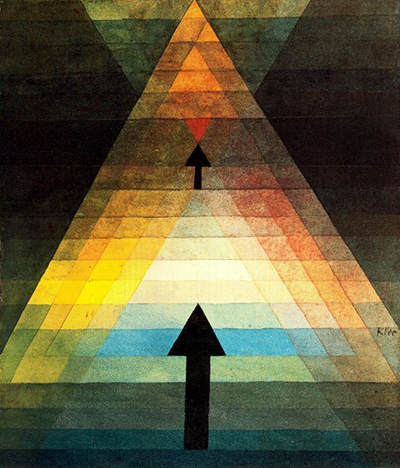Paul Klee's perspective on erotic love is explored in his piece entitled Eros.
This painting was not done in response to changing societal stresses. Instead, Eros focuses on a theme which is common to all of humanity and never really changes.
Eros has more obvious Cubist elements than some of Klee's other paintings. It was created using watercolour pigments, like many of his other works. However, with this piece, the artist also chose to add additional texture by using gouache as a medium. He also uses pencil in this Cubist work.
The inclusion of gouache also caused a greater variety in the way that the painting reflected light. This adds to the visual interest of the piece. As would be expected in a Cubist piece, Eros is filled with geometric shapes. Klee also uses triangles in this painting. They are found in the form of the traditional symbols for man and woman.
The triangle pointing upwards represents the male. The triangle pointing down represents the woman. The two triangles are not set apart. Instead, they combine in an act that would mirror that of expressing erotic love. Instead of using only one or two colours in the work of art, the painter draws on the qualities of hues from different parts of the colour spectrum.
The overall effect is intense and dazzling. Perhaps this mirrors the artist's thoughts on the theme. Certainly, he has shied away from a selection of pale, muted pastels. That is not the effect Klee desires for this work at all.
As an experienced teacher who understands the message transmitted through his use of shades, he has managed to draw attention to the dynamism of erotic love.
There is very little in this painting that is constant, except for the intermingling of the symbols representing the man and the woman. This occupies the entire surface. It is what the artist wishes to draw each viewer's attention to.
Along with that, brighter and darker colours are constantly appearing throughout the interaction. This signals a change in the intensity of the joining at different points. It also points to an increasing richness in the tempo of the interaction. Once again, Klee delights with his skillful use of colour.




